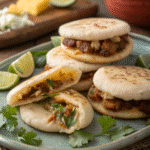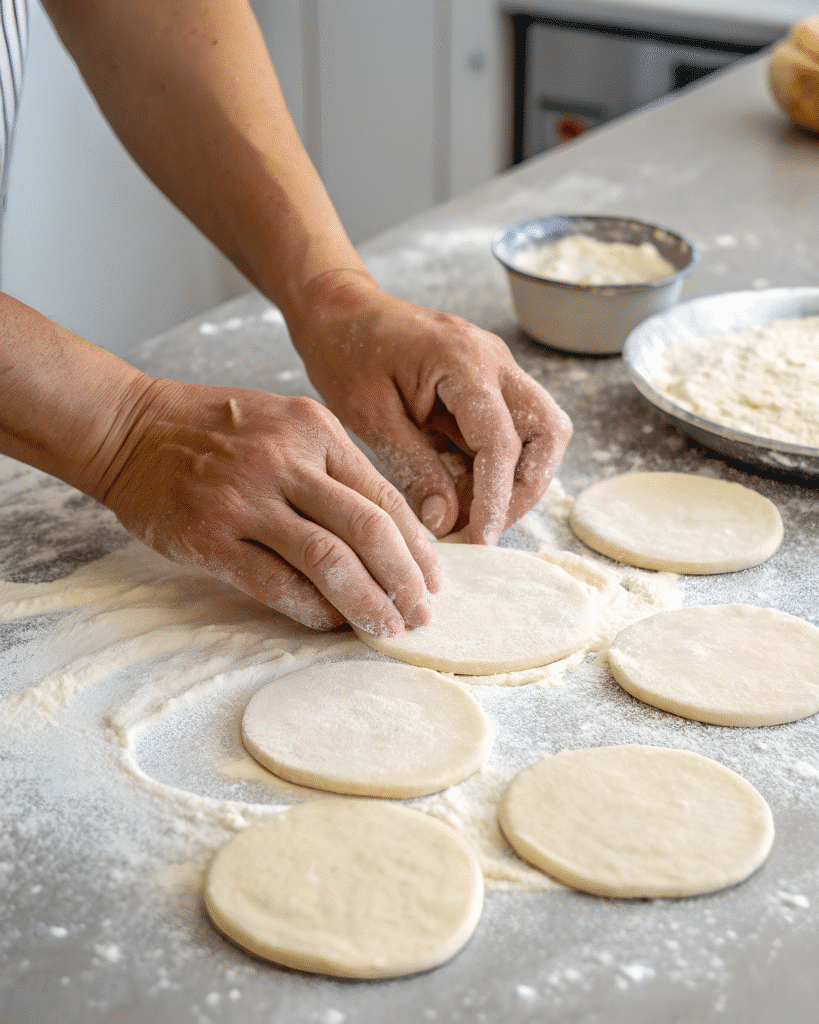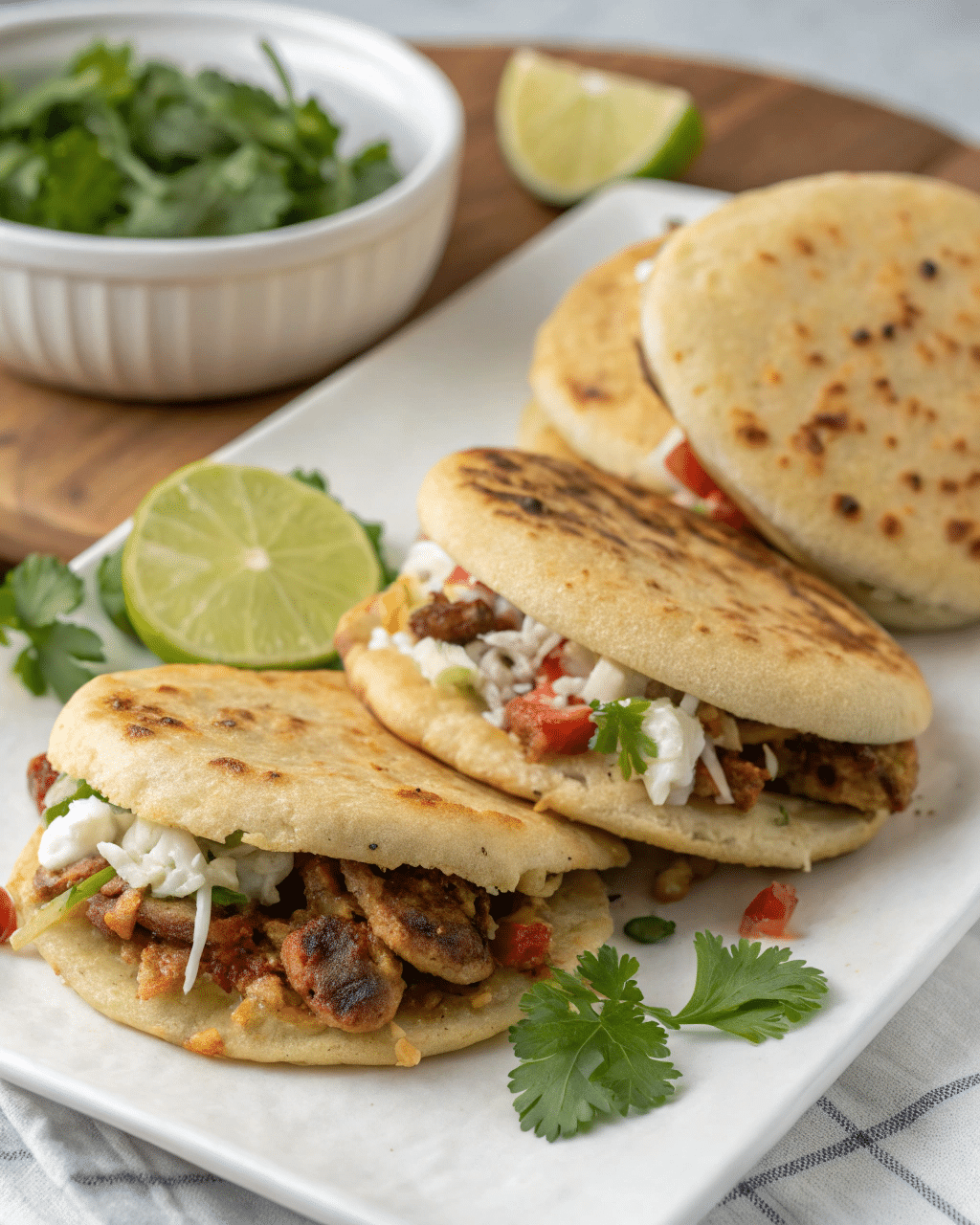Table of Contents
Table of Contents
Introduction
Picture this: it’s a warm summer evening in Madison, and I’m standing in my grandmother’s kitchen, watching her skilled hands transform simple masa into golden, puffy pockets of joy. The sound of sizzling oil and the aroma of fresh corn filled the air as she carefully sliced open each gordita, revealing the perfect pocket waiting to be stuffed with savory fillings. That’s when I fell head over heels for gorditas, those delightful Mexican corn cakes that literally translate to “little fatties” in the most endearing way possible.
Years later, as I stood in my own kitchen experimenting with different techniques, I realized that making authentic gorditas isn’t just about following a recipe it’s about understanding the soul of Mexican cooking. These thick, pillowy corn cakes have been gracing tables across Mexico for generations, and today, I’m sharing everything you need to know to master this beloved dish. Whether you’re a seasoned cook or just starting your culinary journey, this recipe will transport you straight to the heart of Mexican cuisine.
Print
Gorditas Recipe: 5 Secrets for best Mexican Corn Pockets
- Total Time: PT0H50M
- Yield: 8-12 gorditas
- Diet: Vegetarian
Description
Authentic Mexican gorditas – thick, puffy corn cakes with pockets perfect for stuffing with savory fillings
Ingredients
2 cups masa harina
1¼ cups warm water
1 teaspoon salt
2 tablespoons lard or vegetable oil (optional)
½ teaspoon baking powder (optional)
Oil for frying
Fillings of choice (beans, cheese, meat)

Instructions
Étape 1: Mix masa harina and salt in large bowl
Étape 2: Gradually add warm water while mixing with hands until dough forms
Étape 3: Let dough rest 15-30 minutes covered
Étape 4: Divide into 8-12 portions and roll into balls
Étape 5: Flatten each ball into ¼-inch thick disc
Étape 6: Heat comal or skillet over medium-high heat
Étape 7: Cook each gordita 1-2 minutes per side until lightly spotted
Étape 8: Heat oil to 350°F in heavy skillet
Étape 9: Fry gorditas 30-45 seconds per side until golden and puffed

Étape 10: Drain on paper towels
Étape 11: Slice open while warm and stuff with desired fillings
Notes
Ensure oil reaches proper temperature for puffing
Dough should be slightly wet but not sticky
Cover shaped gorditas with damp towel to prevent drying
Serve immediately while warm for best texture
- Prep Time: PT0H30M
- Cook Time: PT0H20M
- Category: Mexican
- Method: Frying
- Cuisine: Mexican
What Makes Gorditas Special for Mexican Cuisine
Gorditas hold a special place in Mexican culinary tradition, representing the perfect marriage of simplicity and satisfaction. These corn-based delights originated in central and northern Mexico, where street vendors and home cooks alike have perfected the art of creating these puffy pockets. Moreover, gorditas showcase the versatility of masa harina, the same nixtamalized corn flour used in tortillas and tamales.
Unlike regular tortillas, gorditas are intentionally thick, allowing them to puff up during cooking and create that signature pocket. Furthermore, this unique structure makes them ideal for stuffing with various fillings, from simple refried beans and cheese to elaborate meat preparations. The cooking process typically involves two stages: first griddling to partially cook the masa, then frying to achieve that perfect golden exterior and fluffy interior.
Traditional Ingredients That Define Authentic Gorditas
The beauty of gorditas lies in their simplicity, requiring just a few essential ingredients that have remained unchanged for centuries. Masa harina forms the foundation, providing that distinctive corn flavor and texture that sets gorditas apart from other flatbreads. Additionally, many traditional recipes include a small amount of lard or vegetable shortening, which contributes to the tender, flaky texture.
Salt plays a crucial role in bringing out the corn’s natural sweetness, while warm water helps bind everything together into a workable dough. Some recipes also incorporate baking powder, which helps this puff up more dramatically during cooking. These basic ingredients, when combined with proper technique, create the perfect canvas for countless filling combinations.
Essential Equipment and Ingredients for Perfect Gorditas
Creating perfect gorditas requires the right tools and ingredients, but thankfully, most items are readily available in standard home kitchens. The most important piece of equipment is a comal or heavy skillet, preferably cast iron, which provides even heat distribution crucial for proper cooking. Additionally, a tortilla press makes shaping gorditas much easier, though you can achieve excellent results using a flat plate or even your hands.
For ingredients, start with high-quality masa harina brands like Maseca are widely available and produce consistent results. You’ll also need warm water, salt, and optionally, a small amount of lard or vegetable oil for richness. The key is using the right proportions: typically 2 cups masa harina to about 1¼ cups warm water, adjusted based on humidity and masa brand.
Preparing Your Workspace for Success
Before you begin mixing your dough, set up your workspace for efficiency and success. Clean your work surface thoroughly and have all ingredients measured and ready. Furthermore, prepare your cooking station with your comal or skillet, a plate for holding shaped gorditas, and clean kitchen towels for covering them. This preparation ensures a smooth cooking process and prevents the masa from drying out.
Keep a small bowl of water nearby for moistening your hands while shaping it. This prevents sticking and helps achieve smooth, crack-free edges. Additionally, have your oil ready for frying and a paper towel-lined plate for draining the finished gorditas. Proper preparation makes the difference between frustrating cooking sessions and enjoyable ones.
Step-by-Step Gorditas Cooking Method
The gorditas-making process begins with creating the perfect dough consistency. Mix masa harina and salt in a large bowl, then gradually add warm water while mixing with your hands. The dough should feel slightly wet but not sticky, similar to Play-Doh in texture. Let the dough rest for 15-30 minutes, allowing the masa to fully hydrate.
After resting, divide the dough into 8-12 portions, depending on your desired size. Roll each portion into a smooth ball, then flatten into discs about ¼ inch thick. The key is achieving uniform thickness too thin and they won’t puff properly, too thick and they’ll remain dense. Heat your comal or skillet over medium-high heat and cook each gordita for 1-2 minutes per side until lightly spotted.
The Secret to Perfect Puffing
The magic happens during the second cooking stage, where gorditas transform from flat discs into puffy pockets. After the initial griddling, heat oil to 350°F (175°C) in a heavy skillet. Carefully place one gordita in the hot oil it should immediately start to puff up. Use a spatula to gently press the edges, encouraging the steam to inflate the center.
The entire frying process takes just 30-45 seconds per side, so work quickly but carefully. When done correctly, your gorditas will be golden brown and hollow inside, perfect for stuffing. If they don’t puff, don’t worry they’ll still taste delicious, and you can improve your technique with practice.

Troubleshooting Common Gorditas Problems
Even experienced cooks encounter challenges when making gorditas, but most issues have simple solutions. The most common problem is gorditas that won’t puff up, usually caused by dough that’s too dry or oil that’s not hot enough. If your gorditas remain flat, try adding more water to your next batch of dough and ensure your oil reaches the proper temperature.
Another frequent issue is cracked edges during shaping, which occurs when the dough is too dry or hasn’t rested long enough. To fix this, slightly dampen your hands and gently smooth the edges while shaping. For those interested in similar Mexican dishes, you might enjoy our Mexican crema recipe, which makes an excellent topping for gorditas.
Achieving the Perfect Texture Every Time
Consistency in texture comes from understanding your dough’s hydration level and maintaining proper cooking temperatures. The dough should leave a slight residue on your hands when properly hydrated but shouldn’t stick excessively. If you’re having trouble judging consistency, practice makes perfect each batch teaches you something new about working with masa.
Temperature control is equally important during cooking. Too low, and your gorditas won’t puff; too high, and they’ll burn before cooking through. Additionally, consider trying our 5-star huevos rancheros recipe as a filling option once you’ve mastered the basic technique.
Filling Options and Serving Suggestions
Traditional gorditas fillings range from simple to elaborate, but all share the common thread of bold, satisfying flavors. Classic options include refried beans with crumbled queso fresco, picadillo (seasoned ground beef with potatoes), and chicharrón prensado (pressed pork rinds in green sauce). These time-tested combinations showcase the gordita’s ability to complement both simple and complex flavors.
For those looking to experiment, modern fillings offer endless possibilities. Shredded chicken tinga, carnitas, or even vegetarian options like sautéed mushrooms and peppers work beautifully. The key is ensuring your fillings are well-seasoned and not too wet, which could make the gorditas soggy. Consider pairing your gorditas with our amazing breakfast burrito recipe for a complete Mexican-inspired meal.
Creative Serving Ideas for Modern Kitchens
While traditional service focuses on the gordita as a complete meal, modern presentations offer exciting variations. Serve mini gorditas as appetizers at parties, or create a gordita bar where guests can customize their own fillings. Additionally, it pair wonderfully with fresh salsas, guacamole, and Mexican crema for a complete flavor experience.
For a lighter option, try filling gorditas with fresh ingredients like lettuce, tomatoes, and avocado alongside your protein. This approach balances the richness of the fried masa with fresh, crisp textures. You might also enjoy our chicken pot pie casserole as an American comfort food alternative when you’re craving something hearty.
Frequently Asked Questions
What are the ingredients in gorditas?
Why do my gorditas not puff up?
Gorditas may not puff up due to several factors: dough that’s too dry, oil temperature that’s too low, or the cooking surface not being hot enough. Additionally, if the dough balls aren’t properly sealed when shaping, steam can escape and prevent puffing. Ensure your oil reaches 350°F and your dough has proper hydration.
Can I make gorditas with all-purpose flour?
While traditional gorditas use masa harina, you can make flour-based versions called “gorditas de harina.” These use all-purpose flour, shortening, baking powder, and milk or water. However, the texture and flavor will be different from traditional corn gorditas more similar to a soft flatbread than the distinctive corn taste of authentic recipe.
What’s the difference between a gordita and an arepa?
While both are corn-based flatbreads, gorditas are made with masa harina (nixtamalized corn flour) and are typically deeper-fried until puffy. Arepas, popular in Venezuela and Colombia, are made with masarepa (a different pre-cooked corn flour) and are usually grilled or lightly fried. Gorditas are generally thicker and have a more substantial pocket for fillings.
Conclusion
Mastering the art of gorditas opens up a world of delicious possibilities in your kitchen. These delightful Mexican corn cakes represent more than just a recipe they’re a connection to generations of culinary tradition and creativity. From the moment you mix that first batch of masa to the satisfying puff of hot oil transforming simple dough into golden pockets of joy, they offer both comfort and adventure.
Remember, like any traditional dish, they improve with practice. Don’t be discouraged if your first attempts don’t puff perfectly or if the dough feels challenging to work with. Each batch teaches you something new about the interplay between ingredients, technique, and temperature. The reward is worth the effort: homemade recipe that rival any street vendor’s creation.
As you become more comfortable with the basic technique, don’t hesitate to experiment with different fillings and presentation styles. Try our chipotle chicken as a spicy filling option, or explore our fresh lime juice guide for the perfect acidic complement to rich, fried gorditas. The beauty of cooking lies in making recipes your own while respecting their traditional roots.
Whether you’re serving them for a casual family dinner or impressing guests at your next gathering, it bring people together around the table. They’re conversation starters, comfort food, and culinary adventures all rolled into one delightful package. So gather your ingredients, heat up that comal, and embark on your own gorditas journey. Your taste buds and your family will thank you for bringing this slice of Mexican tradition into your home.
For more recipes, visit my Facebook page.
